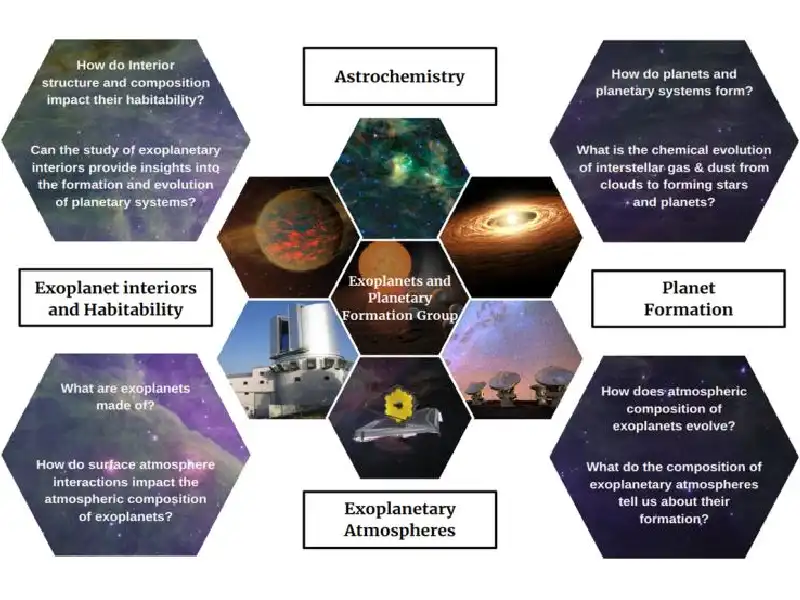From Stardust to Strange Worlds: Unveiling the Origins and Natures of Exoplanets
Our research group investigates the fascinating journey of how planets are born and how they evolve, by bridging four key areas: exoplanetary atmospheres, molecular astrophysics (astrochemistry), planet formation, and planetary interiors.
We focus on the physical and chemical processes within protoplanetary disks — the dense, rotating regions around young stars where planets begin to take shape. By combining observations and simulations, we aim to trace how tiny grains of dust and clouds of gas grow into complex planetary systems, and how these systems change over time.
Alongside planet formation, we study the atmospheres and interior structures of exoplanets, using state-of-the-art models and data from cutting-edge telescopes. To tackle the complexity and scale of modern datasets, we also apply machine learning techniques, which help us extract key atmospheric signatures and physical properties at various stages of a planet's evolution.
By uniting observations with innovative modeling, our goal is to build a clearer, more predictive understanding of how planets (both Earth-like and vastly different) form and evolve across the galaxy.




